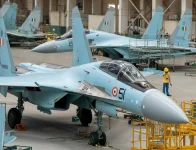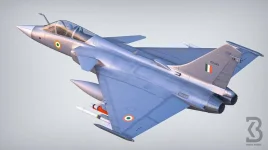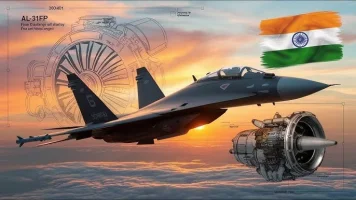- Views: 4K
- Replies: 30
India's pursuit of a domestically produced fifth-generation stealth fighter, the Advanced Medium Combat Aircraft (AMCA), has reached a critical phase as it weighs competing proposals from the UK's Rolls-Royce and France's Safran to co-develop its engine.
The decision is pivotal, not only for the future of the Indian Air Force (IAF) but also for India's long-term goal of achieving self-reliance in critical defence technologies.
The Defence Research and Development Organisation's (DRDO) Gas Turbine Research Establishment (GTRE) is tasked with selecting a partner to build a powerful 110-130 kilonewton (kN) thrust engine for the advanced AMCA Mk2 variant.
While both European aerospace giants have offered full technology transfer, their underlying approaches present different technological and strategic futures for India's aerospace industry.
Safran's Proposal: An M88 Engine Derivative
French engine manufacturer Safran has put forward a proposal based on its proven M88 engine, which currently powers the Dassault Rafale fighters in service with the IAF. The offer involves developing a higher-thrust variant of the M88, a fourth-generation engine, to meet the AMCA's requirements.This proposal is positioned to leverage offset obligations from the 2016 Rafale procurement deal and has included suggestions of supporting the revival of India's indigenous Kaveri jet engine program.
However, basing the new engine on the M88's older architecture raises concerns about its ability to meet the advanced performance metrics of a fifth-generation fighter, such as supercruise (supersonic flight without afterburners) and low infrared signature.
A significant point of apprehension stems from past collaborations, where disagreements over the sharing of core technology and Intellectual Property Rights (IPR) have led to delays and unfulfilled objectives, most notably in a previous effort to jointly upgrade the Kaveri engine.
Rolls-Royce's Offer: A Clean-Sheet, Sixth-Generation Design
In contrast, Rolls-Royce has proposed developing an entirely new engine from a "clean-sheet" design.This offer is built around cutting-edge sixth-generation technologies, including a Variable Cycle Engine (VCE). VCE technology allows an engine to dynamically alter its bypass ratio, optimising performance for both high-speed combat and efficient cruising.
This adaptability is projected to provide significant improvements in fuel efficiency and range, crucial for the AMCA's intended operational profile.
A key differentiator in the British proposal is its long-term vision. Rolls-Royce has suggested that the core technology from the AMCA engine could be adapted to create a family of higher-thrust turbofan engines, potentially ranging from 140 to 280 kN.
These engines could power future medium and heavy military transport aircraft for the IAF and even be used in civilian jets, creating a broad domestic aerospace ecosystem.
This approach promises greater economies of scale and reduces lifecycle costs across multiple aircraft platforms.
Strategic Implications for India
The decision facing GTRE extends beyond technical specifications to the heart of India's strategic ambitions under the "Aatmanirbhar Bharat" initiative.Full ownership of Intellectual Property Rights is a non-negotiable demand for India, a lesson learned from the stalled Kaveri program, where restricted access to core technology prevented independent development.
Rolls-Royce has guaranteed 100% IPR and Transfer of Technology (ToT), which would grant India complete control over manufacturing, future upgrades, and potential exports.
While Safran has more recently matched this offer on paper, historical precedents have created skepticism among analysts regarding long-term dependency on French suppliers for critical components and upgrades.
The choice is between adapting a proven, but older, fourth-generation engine and co-creating a new sixth-generation powerhouse. The former offers a direct line from an existing platform, while the latter promises a technological leap, greater versatility for India's wider aviation ambitions, and complete strategic autonomy over a critical military technology for decades to come.
The final selection, expected by the end of the year, will chart the course for India's combat aviation capabilities and its position as a defence manufacturing power.



